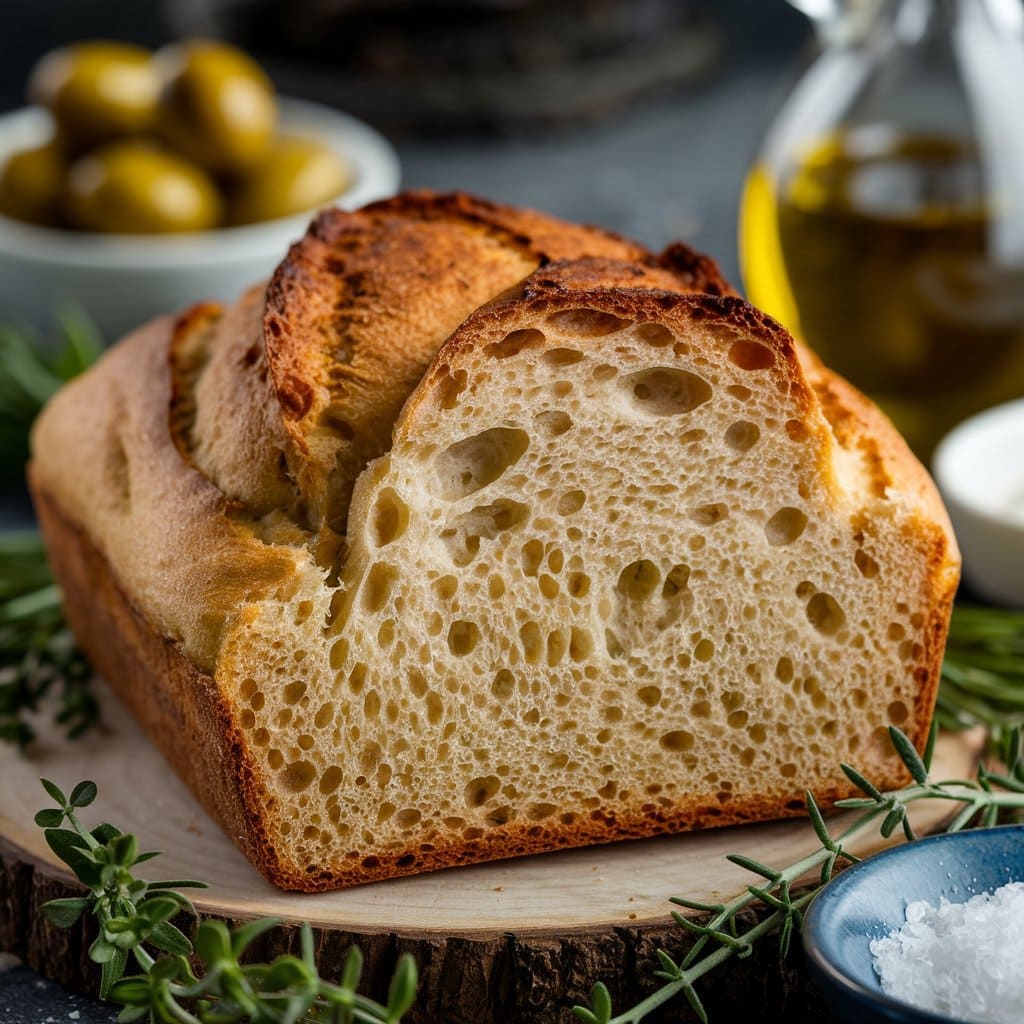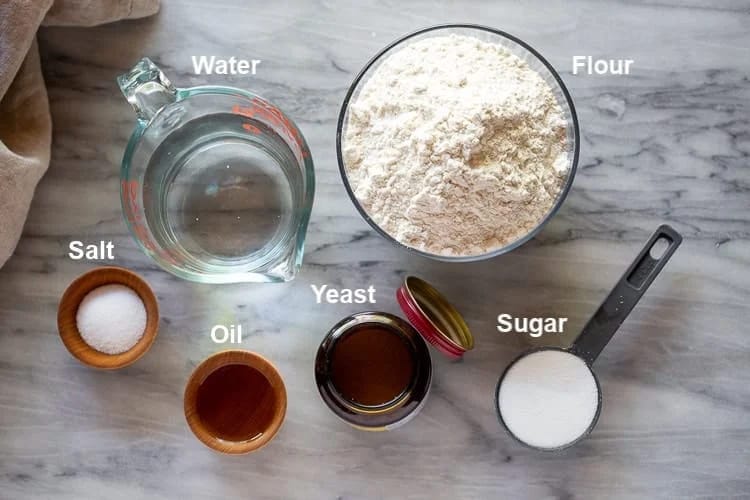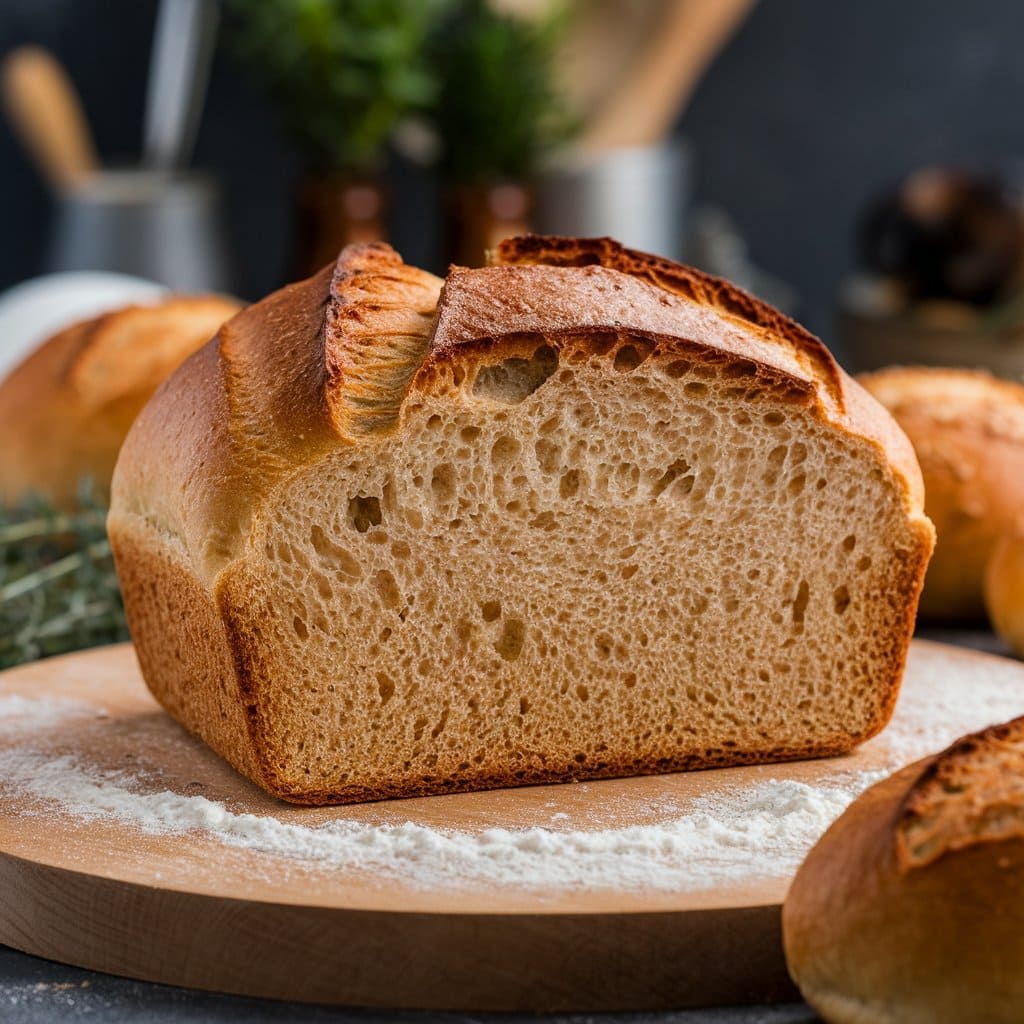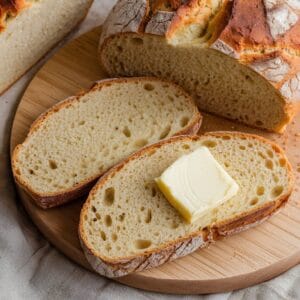There’s something magical about the aroma of freshly baked bread wafting through your home. Making Homemade Bread isn’t just a culinary skill; it’s a form of therapy and a return to simpler, more wholesome times. Whether you’re an experienced baker or a beginner, crafting your bread from scratch is incredibly satisfying. Plus, it allows you to control the ingredients, ensuring every slice is fresh, healthy, and free from unnecessary additives.
This recipe is designed to guide you through the process step by step. With easy-to-follow instructions and tips, you’ll enjoy warm, golden loaves in no time. Get ready to roll up your sleeves and embark on a rewarding journey that will fill your kitchen with the comforting scent of baked bread.

Table of Contents
Nutrition Information (Per Slice)
- Serving Size: 1 slice
- Calories: 150
- Sugar: 2g
- Sodium: 180mg
- Fat: 3g
- Saturated Fat: 1g
- Unsaturated Fat: 2g
- Trans Fat: 0g
- Carbohydrates: 26g
- Fiber: 1g
- Protein: 4g
- Cholesterol: 0mg
Why You’ll Love This Recipe
- Beginner-Friendly: Even if it’s your first time making bread, this recipe ensures success with straightforward steps.
- Versatile: Perfect for sandwiches, toast, or simply slathered with butter.
- Affordable: Homemade bread costs significantly less than store-bought alternatives.
- Customizable: Add seeds, herbs, or whole grains to make it your own.
- Healthier: Free from preservatives and artificial ingredients.
Ingredients
For the Dough:
- 3 ½ cups all-purpose flour (or bread flour)
- 1 packet (2 ¼ teaspoons) active dry yeast
- 1 teaspoon salt
- 2 tablespoons sugar
- 1 cup warm water (110°F or 43°C)
- 2 tablespoons olive oil or melted butter

Ingredients and Substitutions
Flour
- Why It’s Essential: Provides structure to the bread.
- Substitutions: Use bread flour for a chewier texture or whole wheat flour for added fiber.
Yeast
- Why It’s Essential: Causes the bread to rise.
- Substitutions: Instant yeast can be used without activating in water first.
Sugar
- Why It’s Essential: Feeds the yeast and enhances flavor.
- Substitutions: Honey or maple syrup work well.
Olive Oil
- Why It’s Essential: Adds moisture and richness.
- Substitutions: Swap with melted butter or vegetable oil.
How to Make Homemade Bread (Step-by-Step)
- Prepare Your Workspace: Start with clean surfaces and pre-measured ingredients.
- Activate the Yeast: Ensuring the yeast is alive is key to a successful rise.
- Knead Thoroughly: Proper kneading develops the gluten, giving the bread its structure.
- Rising Time: Be patient—good bread takes time to rise properly.
- Bake to Perfection: Keep an eye on the oven, as baking times can vary slightly.
Expert Tips for Success
- Use Warm Water: Too hot or too cold will kill the yeast. Aim for a temperature of 110°F (43°C).
- Don’t Over-Knead: While kneading is essential, overdoing it can make the bread tough.
- Check for Doneness: A fully baked loaf will sound hollow when tapped on the bottom.
- Cool Completely: Cutting into hot bread can make it gummy. Let it cool for the best texture.

Variations and Customizations
- Whole Wheat Bread: Replace half the all-purpose flour with whole wheat flour for a nuttier flavor.
- Seeded Loaf: Mix in sunflower seeds, chia seeds, or sesame seeds for added crunch.
- Herb and Garlic: Add chopped rosemary or garlic to the dough for a savory twist.
- Cinnamon Swirl: Sprinkle cinnamon sugar onto the dough before rolling it into a loaf shape.
Storage and Reheating Instructions
Storage
- Keep bread in an airtight container or bread box at room temperature for up to 3 days.
- Freeze slices or whole loaves in a freezer bag for up to 3 months.
Reheating
- Reheat slices in a toaster for a crisp texture.
- Warm a whole loaf in the oven at 300°F (150°C) for 10-15 minutes.
Serving Suggestions
Homemade bread is versatile and pairs beautifully with:
- Butter and Jam: A classic and simple pairing.
- Soups and Stews: Use as a hearty side for dipping.
- Sandwiches: Makes the best base for BLTs, grilled cheese, or club sandwiches.
Frequently Asked Questions (FAQs)
Q: Can I use gluten-free flour?
A: Yes, but you’ll need a gluten-free bread recipe as the structure relies on gluten.
Q: What if my dough doesn’t rise?
A: Check the yeast expiration date and ensure the water temperature is correct.
Q: Can I make this bread in a bread machine?
A: Absolutely! Just follow the machine’s instructions for basic bread.
Related Recipes
- Garlic Herb Focaccia: A flavorful Italian bread with a crisp crust.
- Rustic No-Knead Bread: Perfect for busy bakers.
- Sweet Brioche Loaf: A rich, buttery treat ideal for French toast.
Conclusion
Making Homemade Bread is more than just a cooking project; it’s a fulfilling experience that connects you to the art of baking. The joy of slicing into a warm loaf that you’ve crafted with your own hands is unmatched. Whether you’re baking for family, friends, or yourself, this recipe ensures delicious results every time.
Try it today, and let the irresistible aroma of fresh bread turn your kitchen into a bakery! Don’t forget to share your success stories in the comments below!

Homemade Bread
Ingredients
For the Dough
- 3½ cups all-purpose flour (or bread flour)
- 1 packet (2 ¼ teaspoons) active dry yeast
- 1 tsp salt
- 2 tbsp sugar
- 1 cup warm water (110°F or 43°C)
- 2 tbsp olive oil or melted butter
Instructions
- Step 1: Activate the YeastIn a small bowl, combine warm water and sugar. Stir until dissolved, then sprinkle the yeast on top.Let it sit for 5-10 minutes until the mixture becomes frothy. This indicates the yeast is active.
- Step 2: Mix the DoughIn a large mixing bowl, combine flour and salt.Add the yeast mixture and olive oil. Mix until a shaggy dough forms.
- Step 3: Knead the DoughTransfer the dough to a floured surface and knead for 8-10 minutes until it becomes smooth and elastic. Alternatively, use a stand mixer with a dough hook for 5-6 minutes.
- Step 4: First RisePlace the dough in a lightly oiled bowl, cover with a damp cloth or plastic wrap, and let it rise in a warm spot for 1 hour or until doubled in size.
- Step 5: Shape the DoughPunch down the risen dough and shape it into a loaf. Place it into a greased loaf pan or shape it freeform on a baking sheet.
- Step 6: Second RiseCover the dough and let it rise again for 30 minutes until it has puffed up.
- Step 7: BakePreheat your oven to 375°F (190°C). Bake the bread for 25-30 minutes until golden brown and hollow-sounding when tapped.
- Step 8: Cool and ServeAllow the bread to cool on a wire rack before slicing. Enjoy fresh or store for later!
Notes
- For a soft crust, brush the loaf with melted butter immediately after baking.
- Adjust the amount of flour slightly if the dough feels too sticky or too dry.

